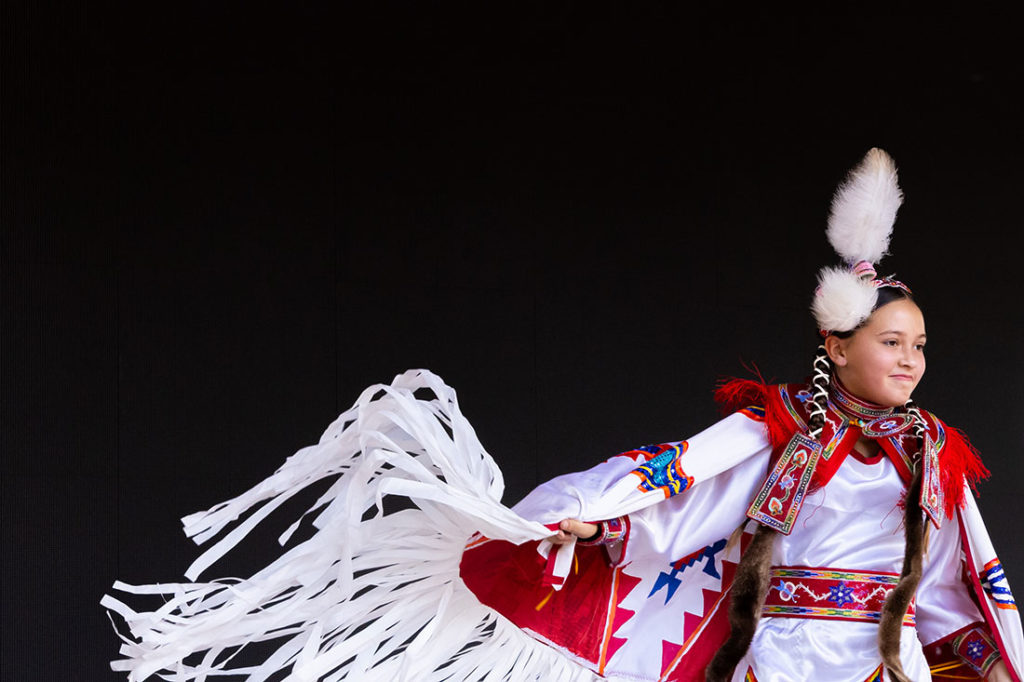The video game Fortnite sparked an idea that Kim Peone used to help a century-old art market survive into its next 100 years.
Executive Director Peone helms the Southwest Association for Indian Arts (SWAIA), the arts organization that hosts Santa Fe Indian Market. Billed as the largest and most prestigious Native American art market in the U.S., Indian Market spent 98 years as an in-person event. Until the COVID-19 pandemic struck. With 60% of the revenues needed to keep the nonprofit afloat on the line—not to mention the livelihoods of the thousand artists hailing from across the U.S. and Canada—Peone needed to pivot. And fast.
Proving that ideas can come from the most unlikely places, Peone’s session watching her children and grandchildren play video games sparked the idea for NDN World. The virtual 3D world became a gathering place for avatar-using collectors and artists during the 2020 digital market. It also showcased Native American art in a—perhaps surprising to some—new platform.
This pivot was one of many Santa Fe Indian Market has made throughout its history, from its origins, when it was organized by non-Native people, through assaults on the very cultures the market celebrates. The artists have established the market’s legacy—one of endurance and reinvention. As Peone and SWAIA set the course for the next century, they are leaning into digital and e-commerce platforms.
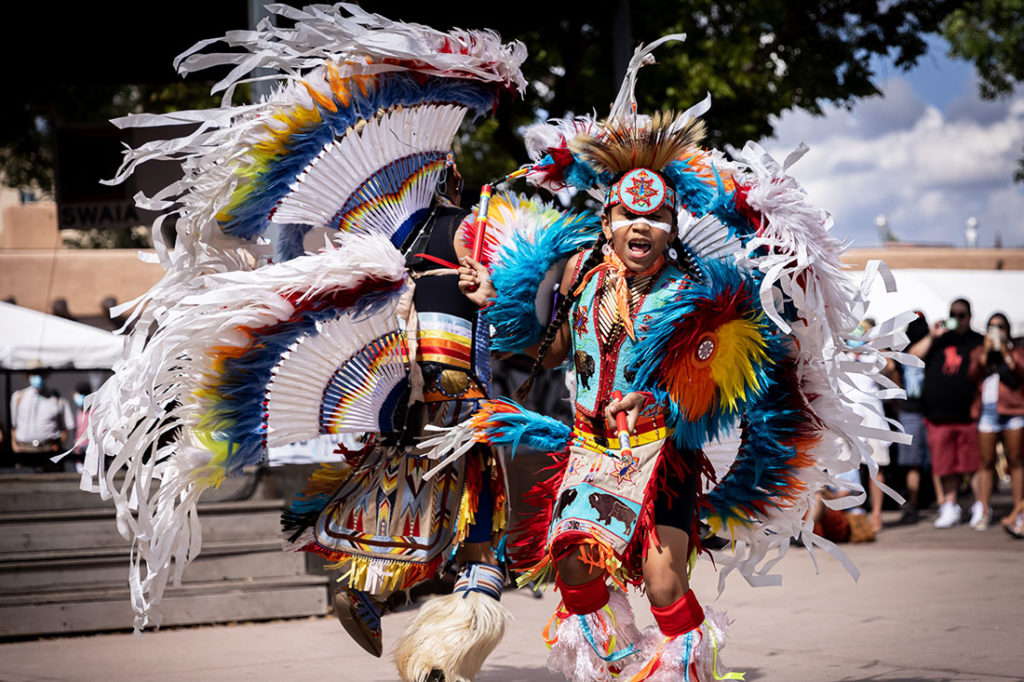
Navigating History
Each August, the market attracts an estimated 115,000 people to New Mexico’s capital to peruse rows of white-tented booths. These booths also unfurl along 400-year-old avenues surrounding the Santa Fe Plaza. Artists hailing from some 200 federally recognized tribes sell creations from intricately beaded headdresses and inlay gemstone jewelry to contemporary sculpture and abstract paintings.
“Indian Market has launched a multitude of careers,” says Tom Teegarden, a SWAIA board member and vice president at Native American-owned environmental consulting firm High Water Mark LLC. “Some of the sharpest eyes in the business evaluate the entries. Prizes are highly coveted, and the competition brings out the best and the brightest. The things that win set trends across Indian Country.” During the market, Native American living cultures are center stage, but it wasn’t always this way.
The Museum of New Mexico (now the New Mexico History Museum) presented the first market in 1922 as an ethnographic display as part of Santa Fe Fiesta, another long-standing community tradition. Hoping to preserve what they saw as a dying culture, organizers created the Indian Fair, as it was then known, with a World’s Fair–like atmosphere with weaving and sand painting demonstrations, Native American dances, and, of course, an art market.
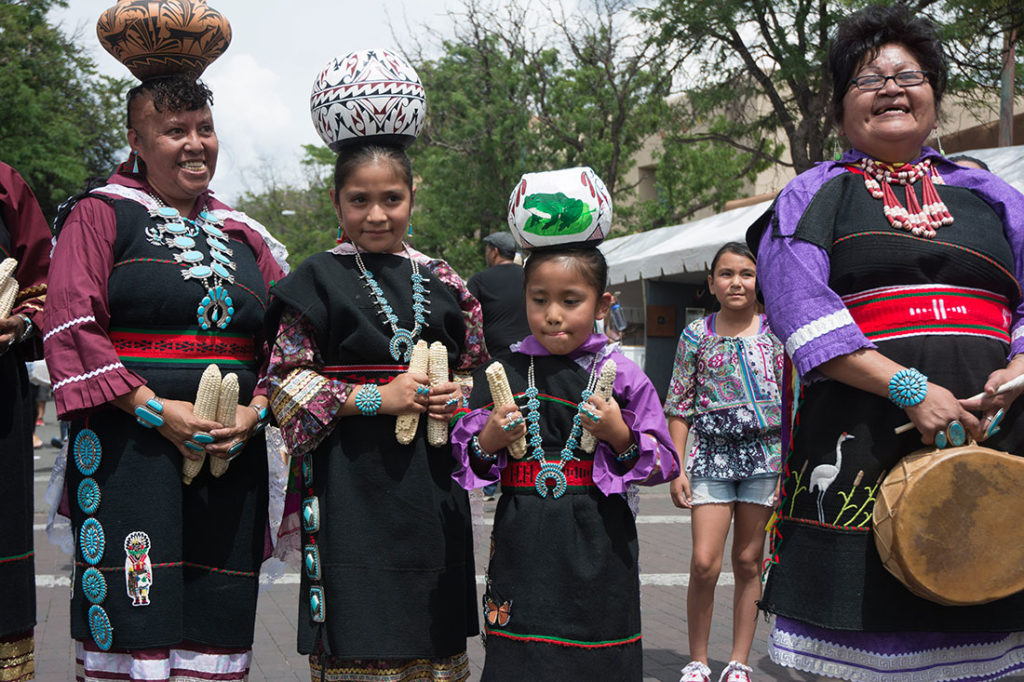
Until 1936, organizing committee members sold pottery, rugs, and jewelry—not the artists themselves. This change was a fulcrum in the market’s history marking the tipping point when Indigenous peoples increasingly grabbed the reins. That journey continues. “We’re constantly taking back the keys and the messaging as a Native organization as opposed to allowing a non-Native voice to speak into the space,” says Peone, a member of the Coville Confederated Tribes of Washington and the first Native American woman to serve as SWAIA’s executive director.
The event began to resemble today’s market in the 1960s. An independent group assembled to organize the event, which received a hefty dose of talent from the newly founded Institute of American Indian Arts, which brought talents from across Indian Country to Santa Fe to study and perfect their mediums. A growing prize money pot enhanced the market’s prestige. In 1993, the board adopted the name Southwestern Association for Indian Arts and set its mission of “bringing Native arts to the world by inspiring artistic excellence.”
Crafting a Legacy
The artists who gather in Santa Fe each year are carrying on a cultural inheritance that dates beyond the market’s founding. Santa Fe, which rests on the traditional lands of the Tewa people, sits along millennia-old Indigenous trading routes. Generations of peoples have traveled to and through this area with their goods.
Fashion designer Patricia Michaels, who hails from Taos Pueblo and participated in the design-competition-reality-TV show Project Runway, remembers seeing evidence of trade while growing up north of SantaFe. “This event brings back some of the people we traded with before [European] contact, such as those from the Northern Plains,” she says.
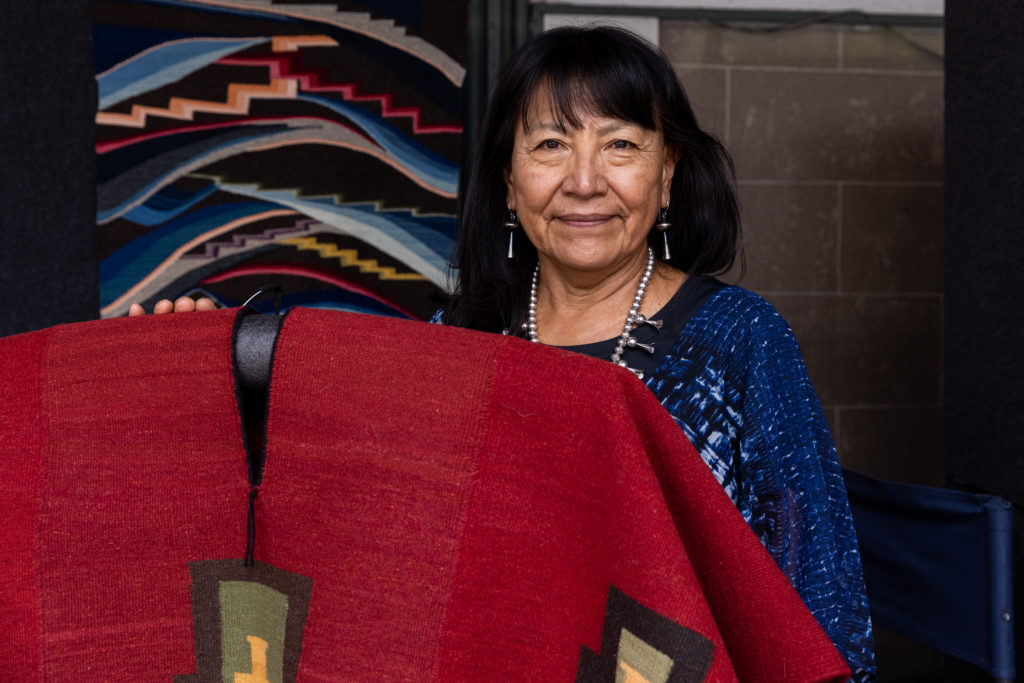
Over Indian Market’s history, world-changing events came and went. The Great Depression. World War II. September 11. And the market remained. It endured despite efforts to extinguish the very cultures that made it thrive. Generations of Native Americans funneled through Indian Boarding Schools, where they were not allowed to speak their heritage languages, follow their spiritual practices, or continue traditional art forms. Indian Market survived because its artists and their cultures survived. “It’s humbling when you walk into Indian Market and see all the cultures represented,” Michaels says. “It’s like no other place in the world. It shows our survival and how we still exist.”
The market’s longevity has become woven into the generations of artists that exhibit there. Children grow up in their grandparents’ and parents’ booths, then claim their artistic heritage with booths of their own. That was the case for Adrian Standing Elk Pinnecoose, who holds Diné and Southern Ute heritage. He grew up in the market and began in the youth division at age 8. “Indian market’s legacy is rooted in tradition, family, culture, and identity,” he says. “It’s a part of people’s lives. A lot of artists look forward to this moment the whole year.”
Now 34, Pinnecoose’s inspirations are traditional—they draw upon his ancestors’ weaving designs—but his creations are anything but. He creates computer-generated prints and 3D-fabricated jewelry, and he has shown laser-cut garments at the market’s contemporary fashion show. Although some collectors balk at the type of non-traditional methods Pinnecoose uses, this evolution is one reason the market has persisted: It evolves along with its artists. “I find it’s very important to express every aspect of one’s voice,” Pinnecoose says. “People should be allowed to explore their ideas in ways that are true to them.”
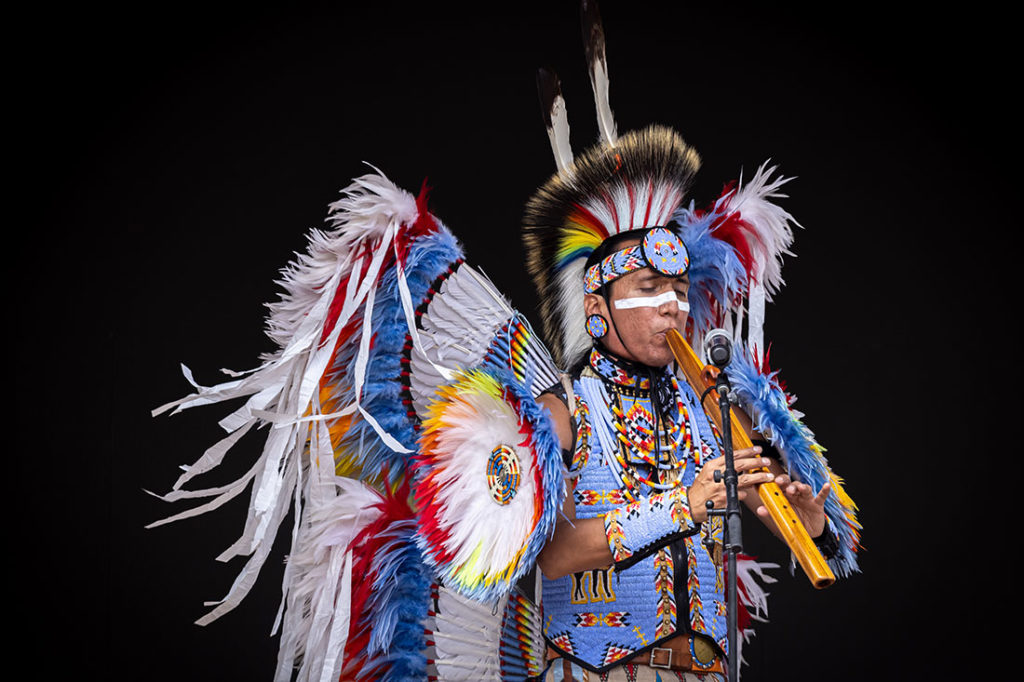
“There’s been a real push pull with tradition versus evolution,” says Bill Lomax, a SWAIA board member of Gitxsan heritage (a Canadian First Nations society) and Vice President at Goldman Sachs. “A lot of folks prefer to pay attention only to what’s traditional. But we’re not static. Our people are growing as artists, people, and communities. We’re evolving the way everybody does.”
The artists’ tenacity has helped the market endure, but the market has also helped Indigenous culture survive. Peone says Indian Market artists average $60,000 in sales during market weekend—a whole year’s income for some. These sales enable artists to live in their Indigenous communities and pursue their art, rather than leaving to find work outside their communities and in other fields.
“These individuals want to explore the vastness of their cultures through the arts,” Lomax says. “Often they are the cultural carriers for their communities.”
Embracing Digital
Peone believes launching the market—and its artists—into the digital realm will set it up for the next 100 years. But making that turn isn’t easy. Peone estimates that as the market planned its 2020 digital market, only 77 of the thousand participating artists had their own websites. With SWAIA’s support, 450 had websites at the end of the market season.
In time for its centennial, the market is launching an e-commerce platform, Indigenous Collections, to shore up its sustainability and scale its economic impact. “Access is a huge barrier for Native Americans. They can sell to their own community members or trading posts near home for a small percentage of the price they could get in a location with true retail,” she says. “We’re trying to provide a digital platform artists can use to sell from rural areas and year-round. We don’t want to have starving artists. We want our artists to prosper.”
However, many artists fear putting their works online where it can easily be imitated. “A lot of the artists have experienced having others make knockoffs and posting them at much cheaper prices. That’s damaging to the real artist,” Lomax says. Although the market can’t prevent works from being copied, it can verify the authenticity of art sold on its site, thus attracting collectors. “We’ll have a safer place for them to sell their wares,” Lomax says.
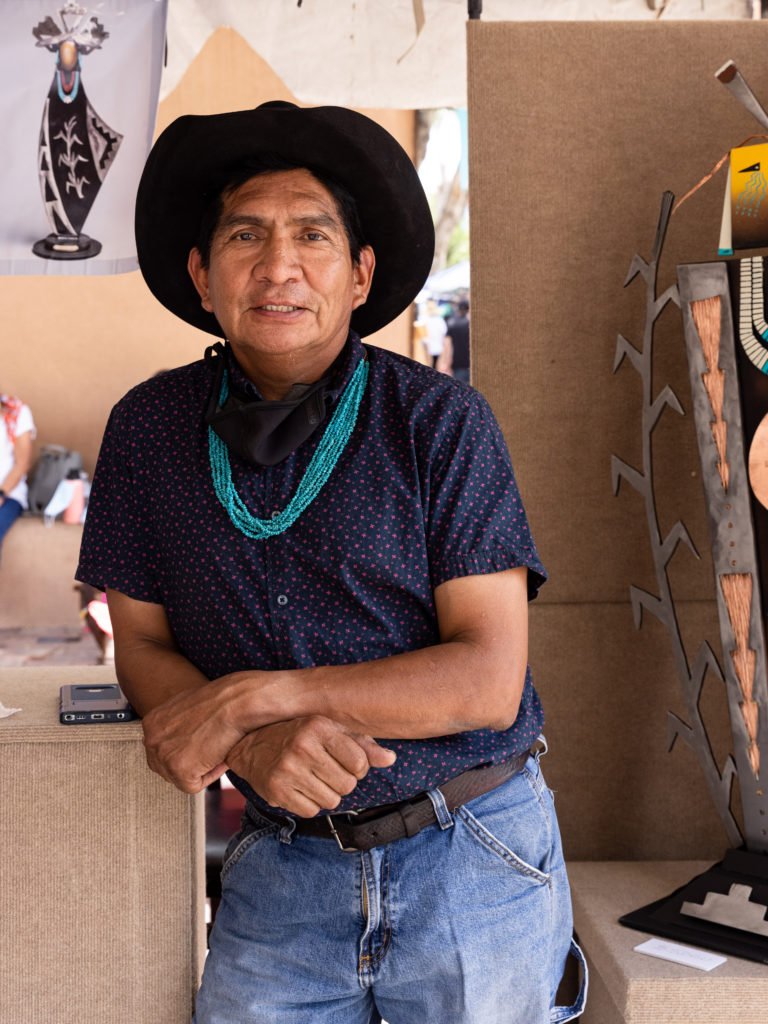
Even as it returned to a robust in-person market in 2022, SWAIA was further developing its virtual NDN World. “It’s another way for SWAIA to bring Native arts to the world,” says NDN World Coordinator Neebinnaukzhik Southall (Ojibwe). “A lot of times when technology is being discussed in relation to Native peoples, it gets positioned in a false binary of ‘traditional vs. contemporary.’ I think there’s room for everyone and everything.”
Sloughing off old-school thinking has given the 100-year-old organization a startup mentality. “Startups have a philosophy of ownership. That’s the [business] culture I’ve created,” Peone says. “We don’t work from 9 to 5, and we don’t see the time and effort we expend as a burden.” With that mindset, the market is just getting started.
“As we go forward, we can’t help but see market evolve,” Lomax says. “The true legacy of Indian Market is that it’s kept cultures alive.”
This article originally appeared in the September/October 2022 Issue of SUCCESS magazine. Photos by Tira Howard and Terrance Clifford



